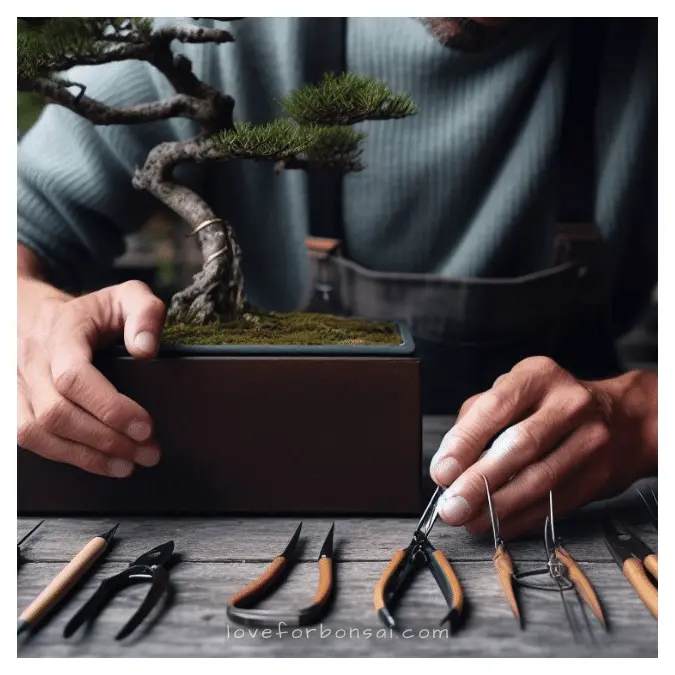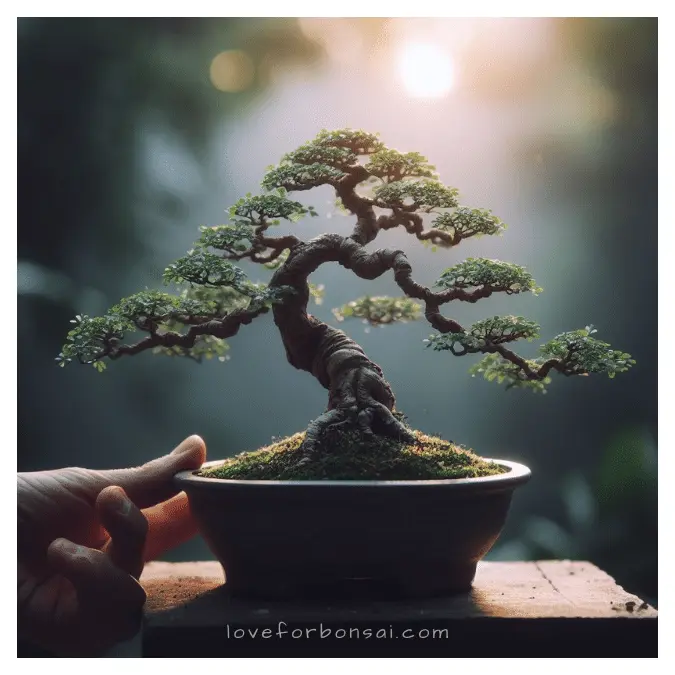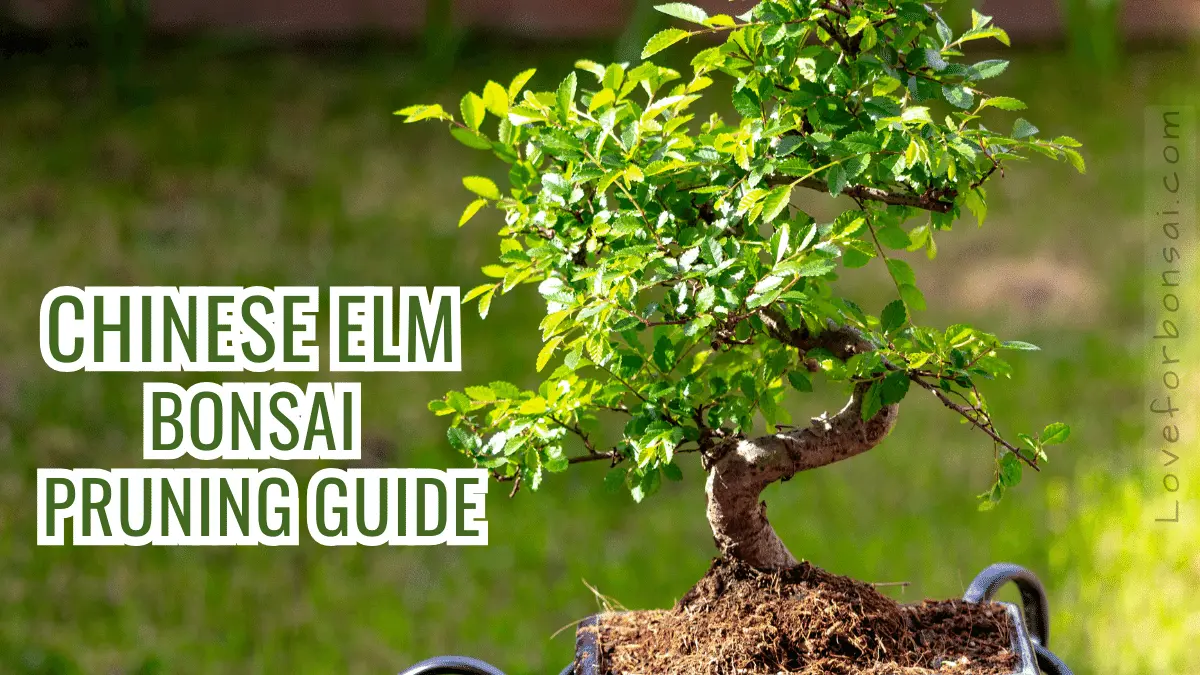The graceful arching branches and delicate leaves of the Chinese elm bonsai tree make it one of the most popular choices for bonsai enthusiasts. However, without proper pruning, these trees can quickly become unruly and lose their refined shape.
After 30 years of growing and styling Chinese elm bonsais, I’ve learned the exact techniques to promote dense foliage growth while maintaining the classic bonsai aesthetic.
Read on to learn my secrets that will have your Chinese elm bonsai flourishing.
Chinese Elm Bonsai Tree Care: A Simple Step-by-Step Guide
Why Pruning Is Crucial
Pruning is a fundamental aspect of bonsai care. It’s not just about keeping your bonsai looking neat and attractive; it’s essential for the tree’s overall health and development. Pruning serves several critical purposes:
- Size Control: Chinese Elm bonsais can grow rapidly, so regular pruning helps maintain their miniature size, which is the essence of bonsai.
- Shape and Form: Pruning allows you to sculpt your bonsai’s shape and form, giving it that classic bonsai look.
- Health: Removing dead or overgrown branches and leaves promotes air circulation and sunlight penetration, preventing disease and promoting new growth.
- Aesthetic Appeal: Pruning enhances the bonsai’s beauty by accentuating its natural features and creating a sense of balance.
Now, let’s dive into the practical steps of Chinese Elm bonsai tree pruning.
Tools You’ll Need

Before you start pruning, gather the necessary tools:
- Sharp Bonsai Scissors: Chinese Elm bonsais have soft wood, so sharp scissors are crucial for clean cuts.
- Wire Cutters: You may need these to remove or adjust wires used for shaping branches.
- Pruning Shears: For thicker branches that scissors can’t handle.
- Concave Cutters: These help create clean cuts without leaving stubs.
Best Bonsai Tree Kits of 2023
When to Prune
Timing is crucial when it comes to pruning your Chinese Elm bonsai. You can either prune Chinese Elms in early spring or in late summer:
- Early Spring: This is the primary pruning season. It’s when you perform structural pruning to shape the bonsai and remove any dead or unhealthy branches.
- Late Summer: A secondary pruning can be done to refine the shape and encourage back-budding.
Step-by-Step Pruning
Now, let’s walk through the process of pruning your Chinese Elm bonsai step by step:

1. Inspection and Planning
- Examine Your Bonsai: Carefully inspect your bonsai to identify areas that need pruning. Look for dead branches, overcrowded areas, and branches that disrupt the desired shape.
- Plan Your Cuts: Before you start cutting, envision how you want your bonsai to look after pruning. Having a plan in mind will help you make precise cuts.
2. Cleaning
- Remove Weeds: Before pruning, clear the area around your bonsai pot of any weeds. This ensures a clean workspace and prevents pests from hiding in the undergrowth.
3. Structural Pruning
- Start with Dead or Unhealthy Branches: Begin by removing any branches that are clearly dead or diseased. These branches are not contributing to the tree’s health or aesthetics.
- Shape the Bonsai: Use sharp scissors or shears to trim branches that disrupt the overall shape you’re aiming for. Make cuts just above a leaf node or a bud facing the direction you want the new growth to go.
- Thin Out Crowded Areas: If your bonsai has too many branches in one area, thin them out to improve air circulation and light penetration. This will help prevent disease and promote healthy growth.
4. Growth Encouragement
- Allow Growth: After the initial pruning, allow your Chinese Elm bonsai to grow freely during the growing season. This encourages new shoots and back-budding.
- Secondary Pruning: In late summer, perform a secondary pruning to refine the shape and maintain the desired size.
5. Wiring (Optional)
- Wire Your Bonsai: If necessary, use bonsai wire to shape branches that can’t be pruned to your desired position. Be gentle and avoid damaging the branches.
6. Aftercare
- Fertilize: Begin fertilizing your bonsai in early spring and continue until late summer. Nitrogen-rich fertilizer is especially beneficial during this period.
- Watering: Ensure your bonsai receives consistent and adequate watering throughout the growing season. Chinese Elm bonsais require well-draining soil, so avoid waterlogged conditions.
- Winter Care: As winter approaches, prepare your bonsai for overwintering. Place it in a cool, well-lit location, but avoid exposing it to freezing temperatures.
Final Thoughts
Pruning your Chinese elm bonsai doesn’t have to be intimidating if you follow the simple methods I’ve outlined here. With the right timing and technique, you can direct the growth of your tree to achieve the shape, size, and beauty you desire.
I hope you found these Chinese elm bonsai pruning tips helpful! Be sure to share this post with fellow bonsai enthusiasts who may want to learn proper pruning methods. Explore the other articles on my site for more tips and inspiration to elevate your bonsai skills.
Most importantly, don’t be afraid to pick up your pruning shears and get styling. With regular attention and care, your Chinese elm bonsai is sure to thrive and add graceful beauty to your space.
